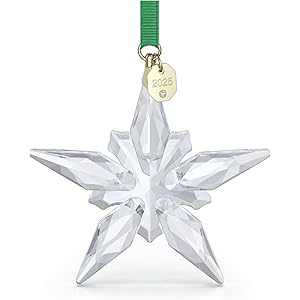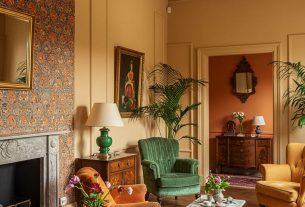As a passionate interior designer, I’ve always believed that contrast is the secret ingredient that can truly transform any living space. It adds depth, excitement, and a unique character to our homes, making them not just places to live, but experiences to cherish. In this article, I will share my insights on how to effectively use contrast in interior design, along with actionable tips and ideas that you can implement in your own space. Together, let’s explore the world of contrasts and discover how to breathe new life into your home!
Understanding the Power of Contrast
Contrast in design refers to the juxtaposition of different elements to create visual interest. This can be achieved through various means, such as color, texture, shape, or size. The beauty of contrast lies in its ability to draw attention to key features of a space while simultaneously creating balance. Here are some essential aspects to consider:
- Color Contrast: Utilizing opposite colors on the color wheel can create vibrant and dynamic spaces.
- Texture Contrast: Mixing smooth surfaces with rough textures can add depth and intrigue to your designs.
- Size Contrast: Combining large and small elements can create a sense of scale and proportion.
- Style Contrast: Mixing contemporary and traditional styles can lead to unique and personalized spaces.
Color Contrast: A Vibrant Palette for Your Home
One of the most impactful ways to create contrast is through color. When I design a space, I often start by selecting a primary color palette and then introduce contrasting colors to create visual pops. Here are some tips for effective color contrast:
1. Use the Color Wheel
The color wheel is a valuable tool in understanding color relationships. Complementary colors, which are opposite each other on the wheel, create the most striking contrast. For example, pairing a deep blue with a vibrant orange can make a stunning statement. Consider these combinations:
- Blue and Orange
- Red and Green
- Yellow and Purple
2. Incorporate Neutrals
While bold colors are fantastic for contrast, neutrals can ground your palette. Using shades of gray, beige, or white can balance vibrant colors, allowing them to stand out without overwhelming the space. Try using a neutral base with bold accents, such as:
- A white wall with a bright yellow sofa
- A gray room featuring red decorative pillows
- A beige backdrop with teal artwork
3. Create Focal Points
Incorporating contrasting colors can help establish focal points in your room. For instance, painting one wall in a bold hue can draw attention and create a dramatic effect. I often recommend:
- Accent walls in deep shades
- Bright furniture pieces against muted backgrounds
- Colorful artwork that stands out in a neutral space
Texture Contrast: Adding Depth and Interest
The interplay of different textures can elevate your interior design to new heights. By combining smooth and rough surfaces, I find that spaces become more inviting and tactile. Here’s how to effectively use texture contrast:
1. Mix Materials
Incorporating a variety of materials can create a rich sensory experience. Think about combining:
- Wood and metal elements for a contemporary look
- Soft textiles with hard surfaces, like a plush rug on a wooden floor
- Glass and stone for a modern yet rustic vibe
2. Layering Textures
Layering is key to achieving depth. I enjoy using a mix of fabrics and finishes in one space. You might consider:
- Silk curtains paired with a cotton sofa
- Woven baskets with ceramic decor
- Velvet cushions on a leather sofa
3. Consider Natural Elements
Incorporating natural elements can enhance texture contrast. Plants, stones, and natural fibers add an organic touch. For a more inviting atmosphere, think about:
- Indoor plants alongside metal furniture
- Wood accents in a predominantly glass space
- Rough-hewn wood with sleek modern decor
Size Contrast: Play with Scale
Utilizing size contrast is another effective way to create a dynamic interior. By playing with scale, you can create visual interest and emphasize certain elements in your space. Here’s how to get started:
1. Varying Furniture Sizes
Mixing large and small furniture pieces can create a balanced and inviting atmosphere. I often suggest:
- A large sectional sofa paired with a small accent chair
- A big coffee table complemented by sleek side tables
- Oversized art pieces with smaller decor items
2. Create Verticality
Incorporating tall elements, such as bookshelves or floor lamps, alongside lower furniture can create a sense of height and drama. Consider:
- High-backed chairs with low coffee tables
- Large plants next to low seating
- Tall mirrors that reflect light and create the illusion of space
3. Use Architectural Features
Architectural features, such as beams or columns, can be highlighted through contrast in size. For example:
- Exposed beams with sleek modern furnishings
- Large windows framed by heavy drapes
- Bold lighting fixtures in rooms with high ceilings
Style Contrast: Embrace Eclecticism
Mixing different design styles can result in a personalized and unique space. As an interior designer, I love to embrace eclecticism, combining elements from various styles to create harmony. Here are some ideas:
1. Blend Old and New
Combining vintage and contemporary pieces can create a timeless appeal. Think about:
- A mid-century modern sofa with antique coffee tables
- Industrial lighting paired with classical artwork
- Rustic wooden furniture in a sleek, minimalist setting
2. Incorporate Global Influences
Bringing in elements from different cultures can add depth to your design. Consider:
- Moroccan rugs in a Scandinavian space
- Asian decor accents in a contemporary room
- Mexican pottery as colorful accents in a neutral palette
3. Create a Theme
Establishing a theme can help guide your mix of styles. Whether it’s bohemian, coastal, or industrial, ensure that the contrasting elements align with your chosen theme. I often recommend:
- Coastal chic with nautical accents and vintage finds
- Industrial loft with soft textiles and plants
- Bohemian with eclectic artwork and layered patterns
Case Studies: Successful Contrast in Interior Design
To illustrate the power of contrast in interior design, let’s take a look at a few inspiring case studies that highlight successful applications of these principles.
1. The Urban Loft
In a recent project, I transformed a small urban loft by utilizing bold color contrasts. The owner wanted a vibrant, energizing space. We painted one wall a deep teal and paired it with a bright yellow sofa. The result was a stunning focal point that energized the entire room. Neutral accents, such as a white coffee table and light gray curtains, helped ground the look while allowing the colors to shine.
2. The Rustic Retreat
Another project involved a rustic retreat in the mountains. Here, I focused on texture contrast by combining reclaimed wood with sleek metal finishes. The living area featured a large stone fireplace alongside modern leather furniture, creating a beautiful juxtaposition that felt both cozy and contemporary. Soft fabrics, such as a wool throw and cotton cushions, added warmth and comfort to the space.
3. The Eclectic Family Home
In a family home that I recently designed, we embraced style contrast by mixing traditional and modern elements. The dining room featured a classic farmhouse table paired with modern acrylic chairs. The result was a playful yet sophisticated dining experience. We added global influences through colorful textiles and artwork, creating a space that reflected the family’s travels and personal style.
Practical Tips for Implementing Contrast
Now that we’ve explored the theory and examples, let’s delve into some practical tips for implementing contrast in your own interior design projects:
1. Start Small
If you’re new to using contrast, begin by introducing small elements. Consider adding contrasting cushions to your sofa or an accent chair in a bold color. This allows you to experiment without committing to a complete overhaul.
2. Create a Mood Board
Before diving into your design, create a mood board that reflects your vision. Gather images, colors, and textures that inspire you. This visual reference will help guide your choices and ensure that your contrasts work harmoniously together.
3. Don’t Be Afraid to Experiment
Interior design is an art, and like any artist, you should feel free to experiment. Mix and match different elements until you find a combination that resonates with you. Remember, there’s no right or wrong in design!
4. Seek Professional Help
If you’re feeling overwhelmed, consider consulting with a professional interior designer. They can provide valuable insights and help you navigate the complexities of contrast in your space.
Final Thoughts: The Joy of Contrast in Interior Design
In conclusion, incorporating contrast in interior design is not just about aesthetics; it’s about creating a space that reflects your personality and enhances your living experience. By thoughtfully combining colors, textures, sizes, and styles, you can transform any room into a vibrant and dynamic environment.
Remember, the beauty of contrast lies in its ability to create a sense of balance and harmony. As you embark on your design journey, keep these principles in mind and allow your creativity to flow. I encourage you to share your ideas, experiences, and transformations with others. Let’s inspire one another to create stunning spaces filled with contrast!
FAQ
What are some easy ways to introduce contrast in my home?
Start with small changes like adding colorful throw pillows, mixing different textures, or using a bold piece of artwork as a focal point. These simple adjustments can significantly impact your space.
Can I use contrast in a small room?
Absolutely! Contrast can make a small room feel more spacious and dynamic. Use lighter colors to open up the space, and incorporate contrasting textures to create depth.
How do I ensure that my contrasts work well together?
Testing combinations through a mood board can help. Additionally, choosing a unifying element, such as a color or texture that appears throughout the space, can create cohesion among contrasting elements.
Where can I find inspiration for contrast in design?
Seek inspiration from design magazines, social media platforms like Pinterest and Instagram, or by visiting local design stores. Observing real-life spaces can provide valuable insights.
If you found this article helpful, please consider signing up for our newsletter for more design tips and inspiration. Don’t forget to share it with your friends and on social media! Together, let’s create beautiful spaces filled with contrast!
Swarovski 2025 Annual Edition Ornament
$63.00 (as of 08/12/2025 04:02 GMT -03:00 - More infoProduct prices and availability are accurate as of the date/time indicated and are subject to change. Any price and availability information displayed on [relevant Amazon Site(s), as applicable] at the time of purchase will apply to the purchase of this product.)
Sign up for our newsletter and stay up to date with exclusive news
that can transform your routine!




